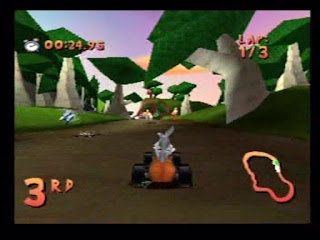In a sense, it breaks my heart that Toy Story has become Pixar’s most substantial franchise. It started
as something so humble and unique, and it’s fast becoming Pixar’s go-to for a
brand rehash – a pull-string goat readily primed for milking. That said, unlike
Dreamworks’ Shrek franchise, the Toy Story series bears endless scope for
such milking, with infinite potential for new character designs, storylines,
and, needless to say, merchandising. Of course, the latter is a subject which
comprises the predominant undercurrent to the most visceral of criticisms of
Pixar’s latter-day output (I’m looking at you, Cars), but as of yet the feature-length Toy Story canon has been altogether impressive, regardless of its appeal
to the plush market. 2013 saw the airing of Pixar’s very first half-hour (with
commercials) television special, the horror flick-inspired Toy Story of Terror, whose release appropriately coincided with
Halloween. Does the special hold up against the series’ previous entries?
The special opens in the boot of Bonnie’s mom’s car, where
the toys are anxiously watching a classic black-and-white horror film. Before
long, they wind up at a roadside motel, where the toys are seemingly picked off
one by one by a mysterious creature lurking in the shadows. In an unforeseen
turn of events, Jessie is forced to combat her fear of the dark and – of course
– ‘the box’. With the help of Combat Carl, Jessie must face her fears and find
her friends before it’s too late.
Part of what makes the Toy
Story franchise so successful is its attention to detail, and such detail
is not absent from this particular offering. The film’s focus on Jessie’s
claustrophobic struggles in ‘the box’ resonate from 1999’s Toy Story 2, which sees Jessie unable to handle being in storage –
a clever, if somewhat rehashed, call-back. Story-wise, there is nothing here
that would offend the most hard-core fans of the films, and its plot, for its
20-minute-or-so running time, is surprisingly advanced; there isn’t a dull
moment. Above all, the special manages to keep the viewer in suspense
throughout, in addition to providing further character development for Jessie.
In fact, this is probably what I would deem to be the special’s saving grace.
The pacing is altogether rather rushed, but its reliance on Jessie’s backstory
enables the propulsion of a solid and gripping narrative – something the
subsequent special Toy Story That Time
Forgot (2014) sadly lacks, simply because we know little about its protagonist
(Trixie), nor are we given any reason to care about her. That’s why this
special works so well.
In all, it’s a solid offering from Pixar, by television
standards at least. Ultimately, it could never compare to the feature-length
offerings, but it’s an impressive effort nonetheless. Though there are notable
similarities to the storylines of previous entries, Toy Story of Terror manages to deliver a compelling and scary(ish)
story. By Pixar standards, it’s a decent offering, but by television standards,
it’s scarily good.
Images Obtained From:
Toy Story of Terror. [DVD]
(2014) Walt Disney Studios Home Entertainment, Burbank, California.





















































